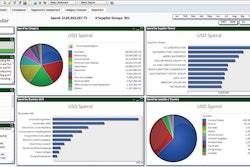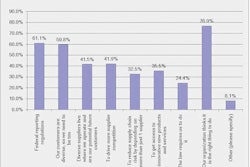
Most large retailers have relationships with thousands of suppliers. When the volume is that high, it sometimes can be difficult to think of individual suppliers as anything more than a transactional necessity to deliver goods to market. But retailers who approach their supplier communities with that mindset may be missing out on all that suppliers can offer. Suppliers have a holistic view of trends, materials and designs that the retailer may not see—and the retailer who empowers its suppliers to be a strategic partner gains a competitive edge on others in the space. The key to empowerment? Two-way communication and collaboration.
To be viewed as a strategic partner, suppliers need to share their industry knowledge through open and active communication with retailers. Collaboration between buyers and suppliers is not just about open communication along the entire supply chain; it is about empowering those same suppliers to feel they can share ideas and make recommendations regarding the process.
Imagine two scenarios involving retail suppliers. In the first, a given retailer treats a supplier in the traditional sense, enlisting it to simply supply the goods and materials needed for next season’s designs through traditional means. In this scenario, the supplier is treated as a vendor, an outsider to the retail brand, used only to facilitate the creation of goods and services.
In the second scenario, the retailer connects with the supplier early in the design process and learns that a specific, new type of leather is trending in belt design. The supplier also alerts the retailer that orders for embroidered patterns on belts are starting to pick up, a look that may explode in popularity in the next few months. The retailer has time to adjust the design and material sources to accommodate this news and create a more popular product.
Both the retailer and supplier are strategic partners in the second scenario, and are mutually invested in the successful creation of goods that delight the end customer. In this case, the supplier is viewed as an extension of the brand, bestowing regional trend knowledge, and making recommendations for both a more efficient supply chain and a better product.
With an empowered supplier, retailers can better:
- Identify trends earlier. Retailers can depend on their suppliers for cultural and regional insights as to what’s trending, and could become widely popular. Suppliers can identify commonalities within their other business lines and regions, and if the relationship is collaborative, they can relay any inside information to retailers.
- Brainstorm ideas. With both designers and suppliers aware of top trends in each region, the design and development phase is brought to a deeper, more cohesive level. Further, if a retailer receives negative backlash on a product line, the relationship between the retailer and the supplier allows for both parties to go back to the drawing board to reconfigure the flaws more quickly and seamlessly than if the retailer needs to problem-solve solo.
- Make decisions. It’s no secret that, when it comes to decision-making and critical thinking, two heads are better than one. Having partners like suppliers that are more strategic than tactical enables businesses to make more informed decisions. Some of these decisions could set the tone for an upcoming season or the strategic direction the business may take in the future.
When buyers and suppliers openly communicate, and empower each other to give constructive feedback and insight, retailers can be more successful than when they operate in a silo. Only when retailers leverage their entire community and bring suppliers into the fold can they truly provide an on-trend, quality product that meets their customers’ needs—and do so quickly for a lower cost.
Sue Welch is the CEO at Bamboo Rose.



















